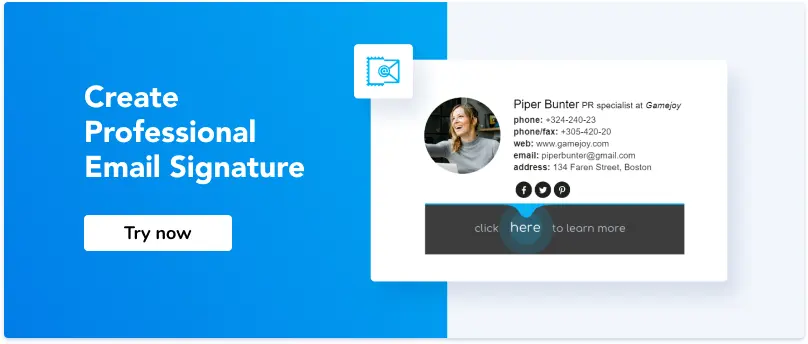Ecommerce Email Marketing Guide: 14 Hacks to Kick off Your Sales
1. What is Ecommerce Email Marketing?
2. Why is eCommerce email marketing so important?
3. Top 14 email marketing hacks to kick off your eCommerce sales
Useful tools:
1. Newoldstamp - Email signature marketing
2. SendGrid - Email builder and sender
3. Boomerang - Tool for scheduling emails
4. Mailtrack - Email link opens tracking
5. Canva - Online tool for making designs
Every online business needs a good email marketing strategy. We will guide you through the essentials of eCommerce email marketing with these 14 hacks.
What is Ecommerce Email Marketing?
Ecommerce email marketing is, simply said, generating sales via emails. These can be promotional emails and trigger-based emails, meaning every time a customer takes action on your website, it triggers a specific message. The most obvious example is the email you get when you abandon a shopping cart and get a reminder of the product(s) you didn't finish purchasing.
Why is eCommerce email marketing so important?
Email is still the best channel to convert customers. Right behind search engines, it is the second most effective channel for traffic and conversion. Besides that, customers acquired via email marketing have a higher customer lifetime value than any other channel. Thus, a good email campaign can reactivate customers that haven't bought something in a while.
Additionally, it works as a way to bind customers and strengthen relationships. According to a Nielsen study, people are more likely to buy a brand familiar with and come across as reliable.
All in all, if you're selling online, here are some of our hacks to kick off your sales.
Top 14 email marketing hacks to kick off your eCommerce sales
1. Use customer segmentation
Look at the relevant data you can collect. You can learn a lot from returning customers and their actions. For example, what kind of products do your customers buy or looked at and didn't buy. Look at demographics; age, gender, and geography. Create your email lists based on these factors and send personalized, relevant emails to your customers.
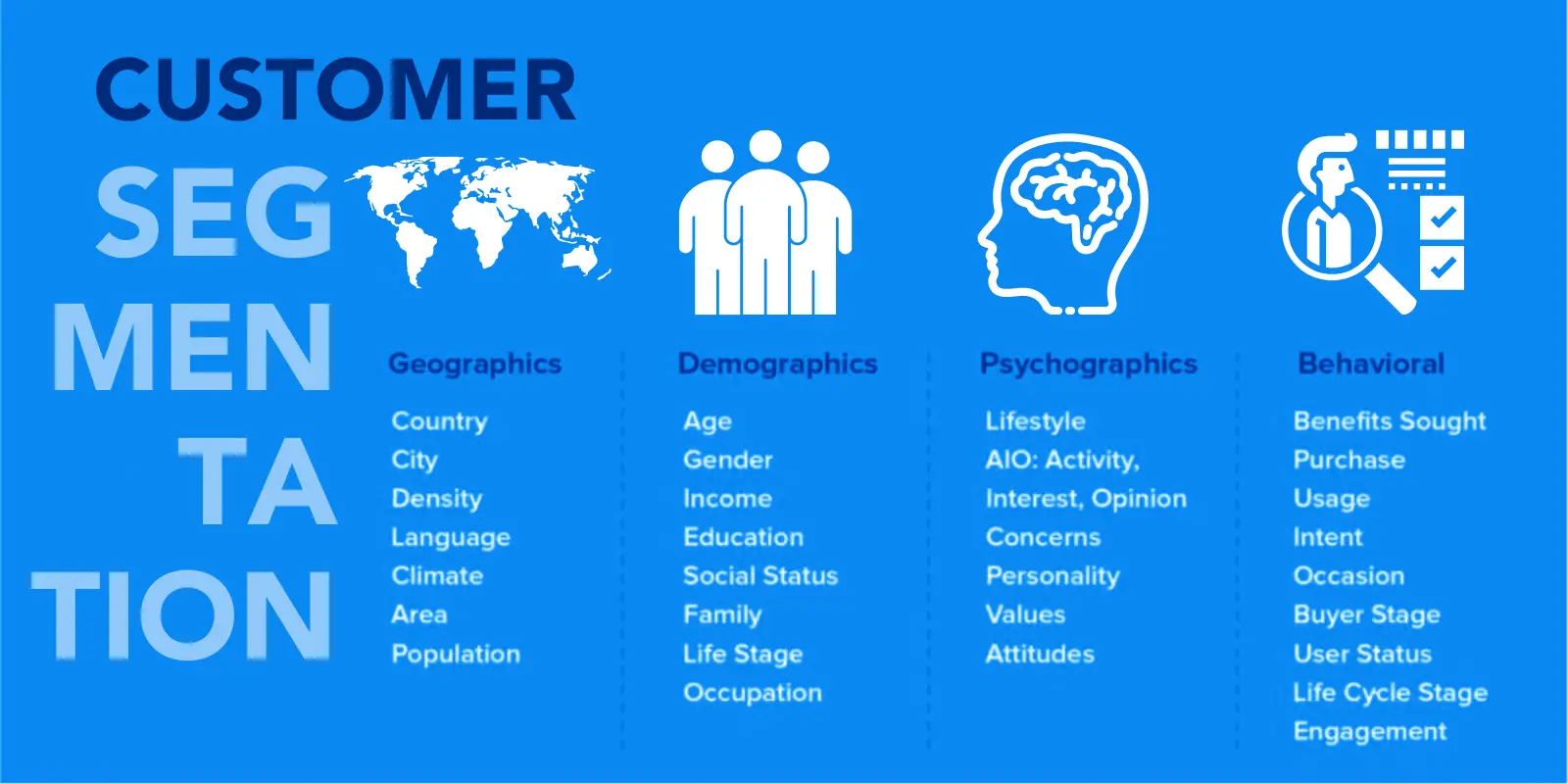
2. Use personalization for your eCommerce emails
Emails that contain a person's name are more likely to be opened. Use a personal name in your opening and subject line. Keep the tone of your message personal and not too salesy. An easy way to do this is to write your messages as if you're talking to someone in person. According to stats, personalization increases open rates by 26%.
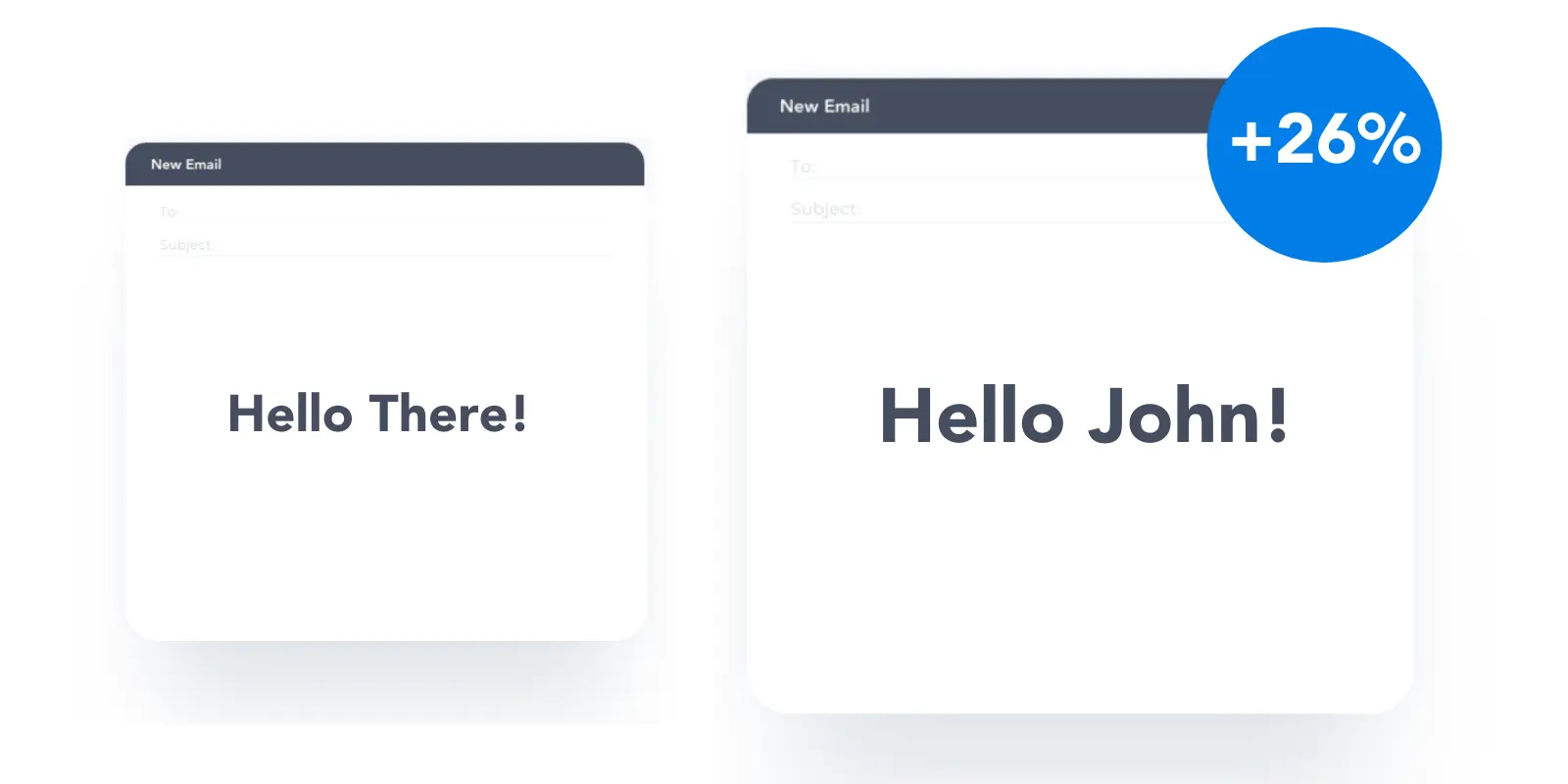
source: Campaign Monitor
3. Use relevant sender name
This is not just to make sure your emails don't get marked as spam; it also helps customers remember your brand. Personal names work even better, so send your emails out from your name.
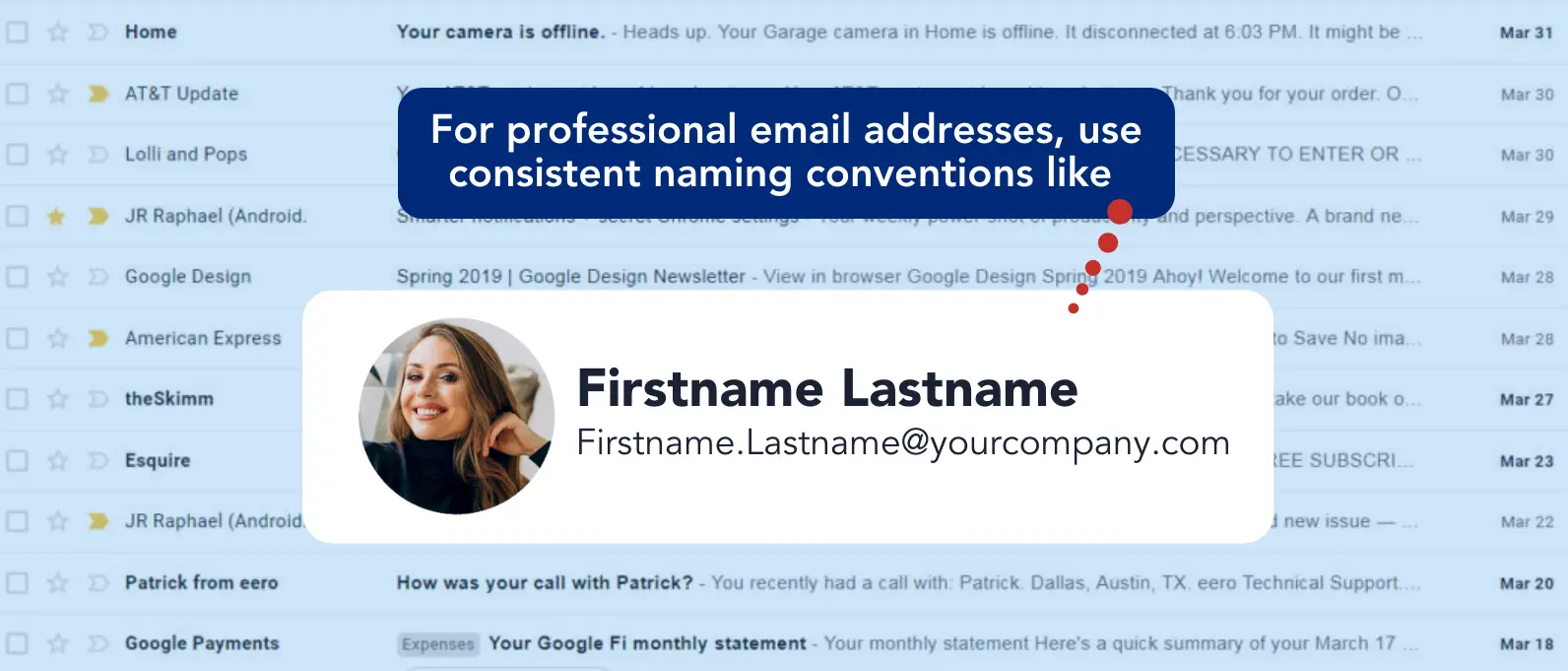
4. Avoid spammy words in your subject lines and body
You might think some words will create a higher opening rate, but in reality, they might make your messages end up in spam. Especially in e-commerce, you need to be careful with words like "free" or "buy now." Instead, check this full list of spam words to help you along in creating your messages
5. Use automation and triggered emails
After you have segmented your buyers and thought or created email messages, you can organize them in a sequence of emails. Create different drip email campaigns for each list and personalize your newsletters and special discounts and offer based on these groups. If you're not sure what kind of automated emails to send, check out some emails in your inbox.
Trigger emails are based on a customer's action on your webpage. The best way to find out how to organize your trigger campaign is to follow several customer journeys and test which actions call for a response. For example, where does your shopper get stuck and leave, where do they abandon the cart and other steps which require attention.
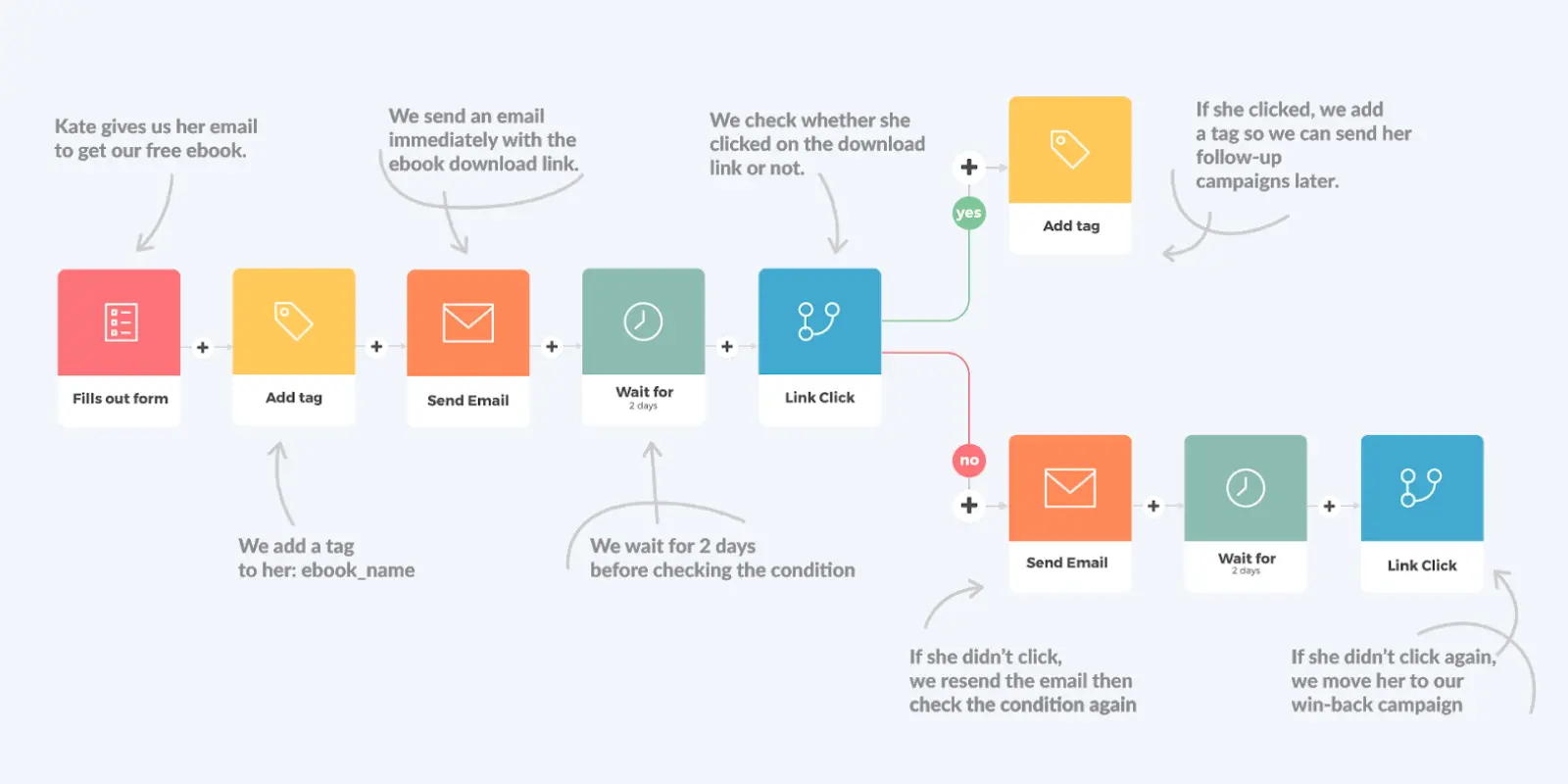
source: automizy
6. Send re-engagement emails
Customers that haven't bought something in a while can be reminded to revisit your online store by sending the right message. Here are some ideas for your re-engagement emails:
- Offer discounts;
- Send relevant and interesting news and other content;
-
Engage your customers on social media channels if they choose to unsubscribe from emails.
Win backs or "We Miss You" emails
This type of email trigger will help you get or win back your former customers who have stopped visiting your eCommerce site for some reason. Marketing to a loyal customer is a lot easier than to customers whose attention you only need to win, or to those who have moved to the category of former customers.
To restart relationships with buyers who have stopped buying goods on your website, you can send "We Miss You" emails. Here you can send a series of successive emails, encouraging buyers to visit your website, describing new goods/services, and maybe offering some discounts for future purchases.

source: Pinterest
7. Use urgency
Coupons and offers are a great way to call for action. Add a time limitation, and your sales will skyrocket. This works so well because people respond well to the fear of missing out on an opportunity. An email that creates the urgency to act before it's too late.
8. Send upsell and cross-sell in your eCommerce emails
Convince your customers to buy similar but more expensive products in your emails (upselling) or buy something that goes with the product they already purchased (cross-selling). Directing attention to other options or features is a great way to increase your sales.
9. Send holiday greetings and birthday emails
Use personal information to send out special occasion emails to your customers. You can do this by sending special offers on birthdays and holidays.
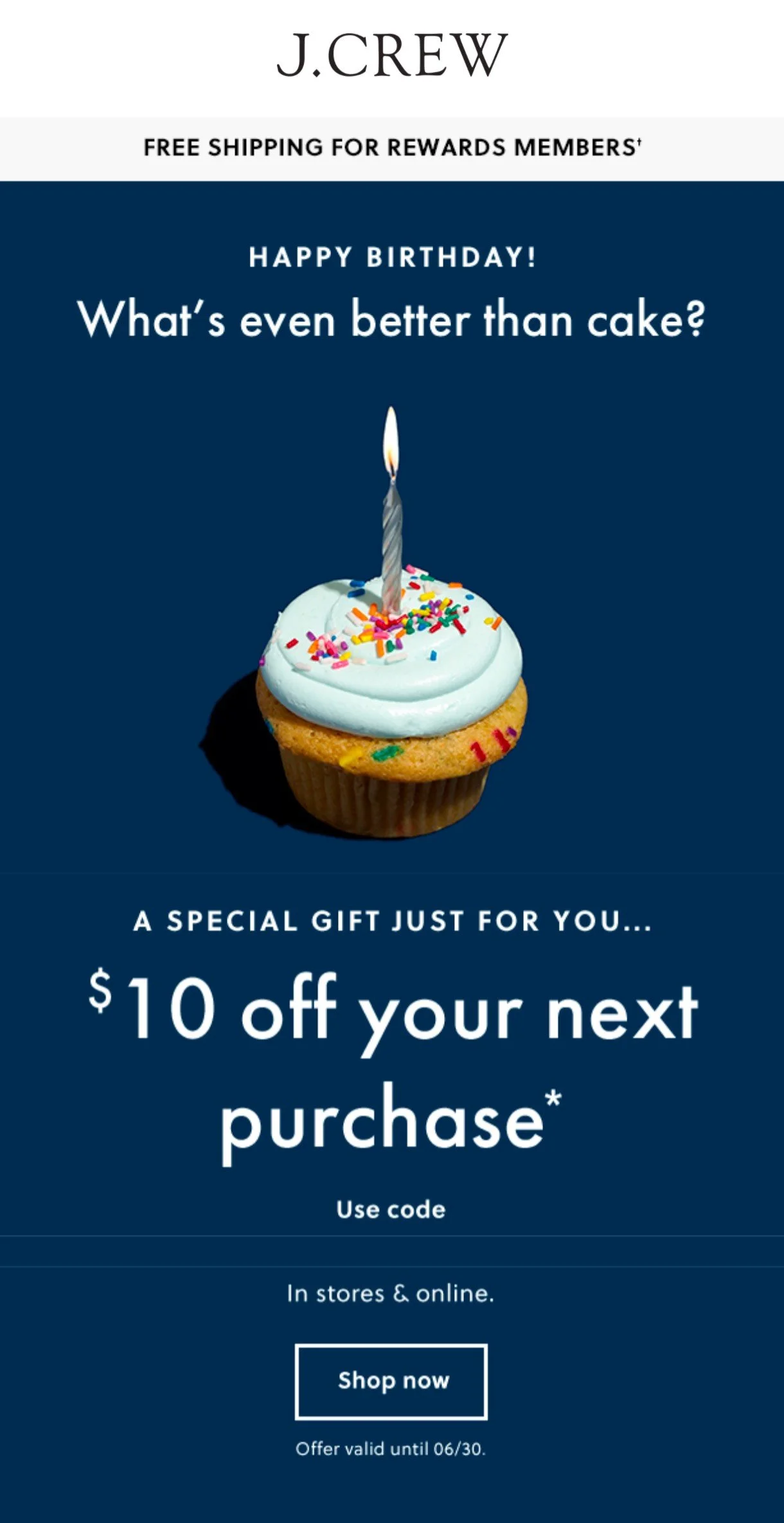
source: Mailerlite
10. Send replenishment emails
If you're selling food or other consumable products, replenishment emails can help to increase your sales. In this case, you already know your customers like the product, and a simple reminder to stock up can boost your sales.
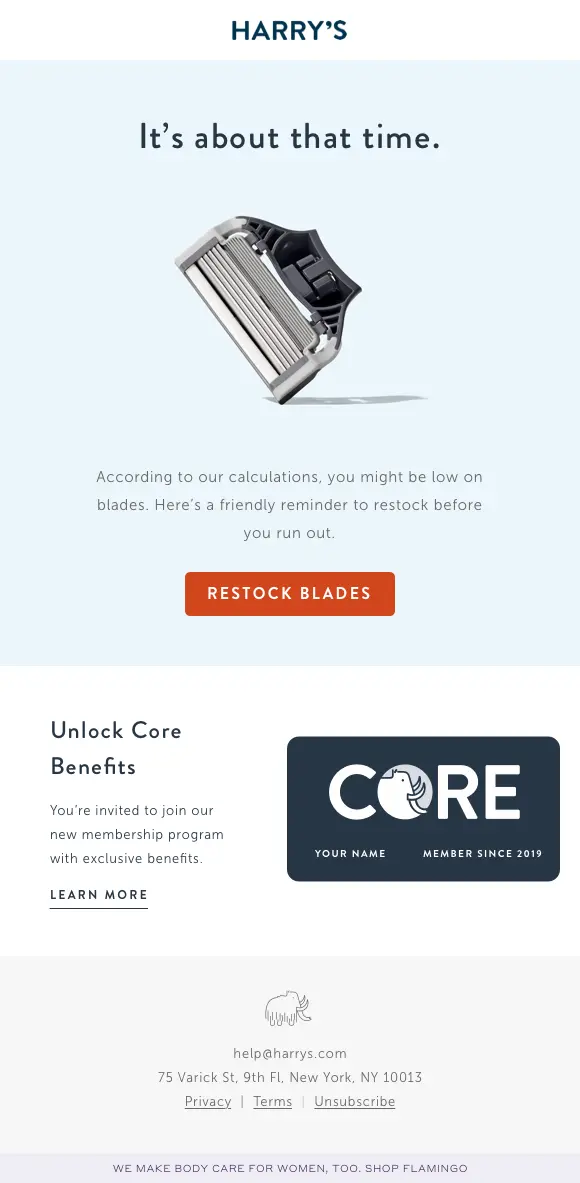
source: Mitch Fodstad
11. Use responsive design for all devices
More than half of all emails are read on a mobile device. So be sure to make all your content mobile-friendly and don't miss out on half of your potential customers.
12. Ask For Feedback Emails
You should not forget about your customers once the purchase is completed. In other words, always remind people about your eCommerce store. The easiest way to do that is to ask for:
- product reviews;
- purchase experience reviews.
When asking for product reviews, you get two valuable benefits: make your web store look more professional, helping buyers making the right choice, and you do not let people forget about you.
Also, it is an excellent opportunity to improve your services and make your web store more appealing for current and future customers.
13. Send general newsletters
When sending regular newsletters, you kill two birds with one stone: remind customers about your website and keep them updated with your products or services. Always encourage customers to revisit your site.

source: Graphic Mama
To increase the marketing power of the email triggers, send personalized letters. Also, be sure to finish each letter with an professional email signature, another powerful and cost-effective eCommerce marketing tool.
14. Use preview text to highlight your promotion
Think about the body of your text and the preview receivers will see. A preview text should trigger your reader to open the email and take action.
Conclusion
Of all marketing tools, modern eCommerce companies use today, email marketing is one of the most efficient, as it makes it possible to reach customers not only on all devices.
However, to avail all the benefits of any marketing tool, you need to understand how to use it properly. Not every message sent by you can interest your customers. Only those emails that call a customer to certain actions can be impactful.
Use these 14 most popular email hacks for eCommerce to get the most of your marketing campaign.


